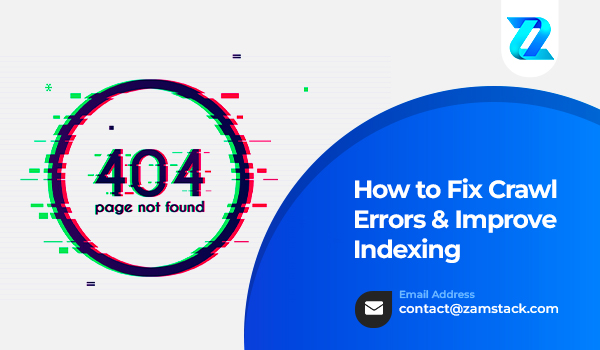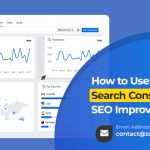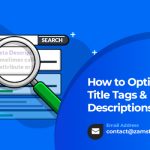Crawl errors can be a major roadblock to your website’s SEO success. If Googlebot, or any search engine bot, cannot crawl your site efficiently, your pages may not get indexed, limiting their visibility in search results. In this article, we will explore how to fix crawl errors, optimize your site for better indexing, and ensure Googlebot is working at full efficiency. All of these strategies are crucial for improving your site’s SEO ranking.
What Are Crawl Errors?
Crawl errors occur when Googlebot tries to access a page on your website but encounters a problem. These errors can prevent pages from being indexed or fully crawled, which may ultimately harm your site’s rankings.
Common crawl errors include:
-
404 Errors (Not Found): The page doesn’t exist.
-
5xx Errors (Server Errors): The server fails to load the page.
-
Soft 404 Errors: A page returns a “not found” message but is not recognized as a 404 error.
-
Blocked URLs: Pages that are disallowed in the robots.txt file.
Understanding and fixing these errors is critical for SEO and user experience.
Why Crawl Errors Matter for SEO
Crawl errors can prevent Google from understanding and indexing your website. If Googlebot is unable to crawl or access key pages, they won’t be included in search results, and the search engine won’t be able to rank them. This impacts your site’s organic traffic and search visibility, reducing your ability to reach potential customers.
For example, a 404 error could prevent a critical landing page from appearing in search results, leading to missed opportunities for your business.
How to Identify Crawl Errors in Google Search Console
Google Search Console (GSC) is a valuable tool for identifying crawl errors on your website. Here’s how you can use GSC to find issues:
-
Log into Google Search Console.
-
Go to the ‘Coverage’ report: This will show you any crawl errors, including pages that Googlebot couldn’t crawl.
-
Filter errors by type: This helps you focus on critical issues, such as 404 errors or server errors.
-
Inspect individual URLs: Use the URL Inspection Tool to see detailed information about specific pages that might have crawling issues.
By reviewing the Coverage report and resolving the issues listed, you can improve how Googlebot crawls your site.
Common Crawl Errors and How to Fix Them
1. 404 Errors: Page Not Found
A 404 error occurs when a page is not found on your website. This can happen when a URL is deleted or renamed but no proper redirection is put in place.
How to fix 404 errors:
-
Check for broken links: Use a site audit tool to identify all broken links.
-
Set up proper 301 redirects: Redirect visitors and search engines from the old URL to the new one.
-
Update internal links: Ensure that all internal links point to active pages.
2. Server Errors (5xx)
Server errors indicate issues with the server hosting your website, which prevents Googlebot from accessing your pages.
How to reduce server errors:
-
Improve server performance: Work with your hosting provider to ensure your server is up and running efficiently.
-
Optimize your site for speed: Compress images, use caching, and minimize code to reduce server load.
3. Soft 404 Errors
Soft 404 errors happen when a page returns a “not found” message but isn’t marked as a 404 error. Google may still attempt to crawl the page, but this wastes crawl budget.
How to identify and fix soft 404 errors:
-
Look for pages with a “not found” message but a 200 status code.
-
Set a proper 404 HTTP status code for missing pages.
-
Redirect or remove soft 404 pages that are no longer relevant.
How to Submit URLs for Indexing
Sometimes, even after fixing crawl errors, pages may not be indexed right away. To ensure quicker indexing, submit your URLs directly to Google:
-
Use the URL Inspection Tool: In Google Search Console, enter the URL and click “Request Indexing.”
-
Submit a Sitemap: Ensure your XML sitemap is up to date and contains all the pages you want to be indexed.
Submitting your pages for indexing will help Googlebot crawl them faster and more effectively.
Crawl Budget Optimization
Crawl budget is the number of pages Googlebot will crawl on your site within a given time period. By optimizing crawl budget, you ensure that important pages are prioritized for crawling.
Tips for optimizing crawl budget:
-
Remove unnecessary pages: Delete or noindex low-value pages.
-
Fix broken links: Broken links waste crawl budget and prevent Googlebot from crawling important pages.
-
Use internal linking: Guide Googlebot through your site using strategic internal links that point to important pages.
By optimizing crawl budget, you allow Googlebot to focus on your most important content.
How to Handle Redirect Chains and Loops
Redirect chains and loops occur when a page redirects to another, and that second page redirects back to the first one, creating a loop, or when a series of redirects happen before reaching the destination.
How to fix redirect chains:
-
Limit redirects: Aim for only one redirect between the source and destination.
-
Fix redirect loops: Ensure no page is caught in an infinite loop of redirects.
Reducing redirects improves crawl efficiency and prevents Googlebot from wasting crawl budget.
How to Speed Up Googlebot Crawling
Googlebot may crawl your site slowly if it’s not optimized. Improving crawl speed helps ensure your pages are indexed faster and more accurately.
Tips to speed up Googlebot crawling:
-
Improve website load time: Compress images, use faster servers, and implement caching.
-
Enable HTTP/2: This protocol allows Googlebot to fetch resources in parallel, speeding up the crawling process.
-
Minimize JavaScript rendering: Ensure that Googlebot can crawl your content without relying on JavaScript rendering.
Faster crawling means quicker indexing and better chances of ranking higher.
How to Test if Google Can Crawl Your Site
If you’re unsure whether Googlebot can crawl your site, use Google’s tools to test it:
-
Fetch as Google: Use this feature in Google Search Console to see how Googlebot views your page.
-
Mobile-Friendly Test: Since mobile indexing is a priority, ensure your website is mobile-friendly by using Google’s Mobile-Friendly Test.
Testing your site’s crawlability will give you confidence that Google can access your pages.
Conclusion
Crawl errors can significantly impact your website’s SEO, but fixing them can lead to better indexing and improved search rankings. By identifying common crawl errors like 404 or 5xx errors, optimizing your crawl budget, and submitting your pages for indexing, you can ensure that Googlebot can effectively crawl your site. If you’re facing issues, tools like Google Search Console are invaluable for diagnosing and fixing crawl errors.
If you’re looking for expert assistance in fixing crawl errors and improving indexing, Zamstack Technologies offers comprehensive SEO services to optimize your site’s performance and boost your rankings.
FAQs
1. What are crawl errors?
Crawl errors occur when Googlebot fails to access a page on your website, which can prevent the page from being indexed and appearing in search results.
2. How can I find crawl errors on my website?
You can find crawl errors in Google Search Console by reviewing the ‘Coverage’ report and inspecting individual URLs using the URL Inspection Tool.
3. How can I fix 404 errors?
To fix 404 errors, use 301 redirects to send users and search engines to relevant pages, or remove the broken links from your website.
4. What is crawl budget?
Crawl budget is the number of pages Googlebot will crawl on your website in a given time. Optimizing crawl budget ensures important pages are crawled more efficiently.
5. How can I speed up Googlebot crawling?
To speed up crawling, improve your website’s load time, use HTTP/2, and ensure your content is accessible without relying on JavaScript rendering.












